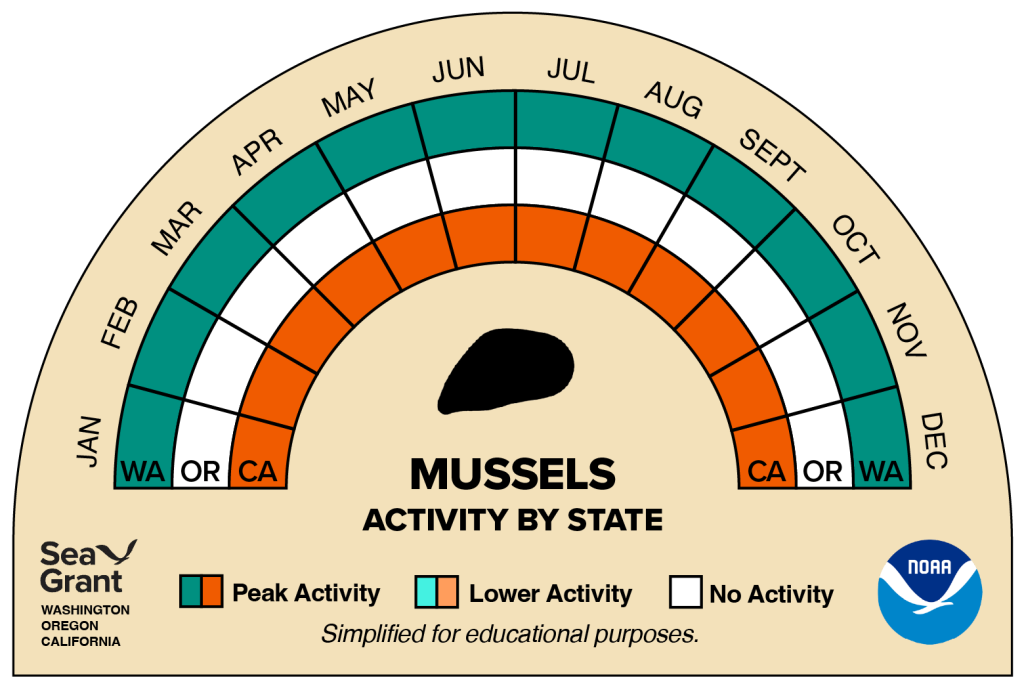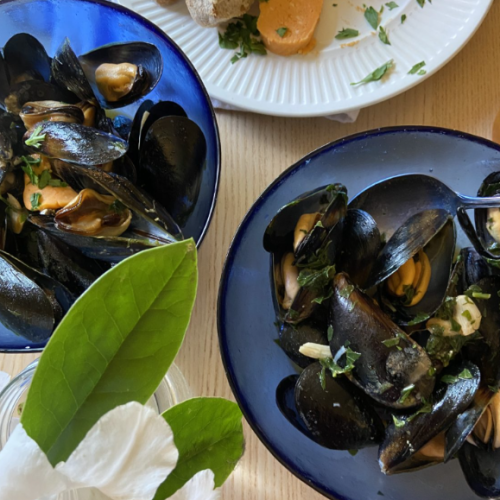Mussels

There are three main species of mussels farmed on the West Coast: the native California mussel (Mytilus californianus), the bay mussel, also known as the Pacific blue mussel (Mytilus trossulus), and the non-native Mediterranean mussel (Mytilus galloprovincialis). California mussels occur along the entire West Coast, from Alaska down to northern Mexico. The other two species have narrower ranges, with bay/blue mussels ranging from Alaska to central California and Mediterranean mussels ranging from northern British Columbia to Baja California. Mussels are bivalves, having two shells that are hinged together. The shells are teardrop-shaped and blue-black, black, or brown in color. California mussels typically reach larger sizes than the other two species, growing eight to 10 inches long compared to six inches for Mediterranean mussels and four inches for bay/blue mussels. Each of these species matures at around two to three inches. Mussels often form large beds by aggregating in groups and attaching to one another with cord-like filaments (byssal threads) that they produce and use as anchors. Mussels feed by filtering microscopic algae from ocean waters. They are a favorite food item not only for people, but also many animals including sea stars, lobster, crab, lingcod, birds, sea otters and more.
Overall availability
Mussels are farmed in California and Washington. Commercially farmed mussels can be found year-round in a variety of forms including live, frozen and smoked.

Management
Mussels are farmed using longline farm systems just off the coast or in bays and also collected via rafts. Commercial shellfish aquaculture is managed by a variety of agencies such as the state Departments of Fish and Wildlife or Natural Resources (CA, WA), the Army Corp of Engineers, the Food and Drug Administration, and local and state Departments of Public Health. In Washington, shellfish aquaculture is also co-managed with Treaty Tribes. Learn more about commercial shellfish aquaculture.

